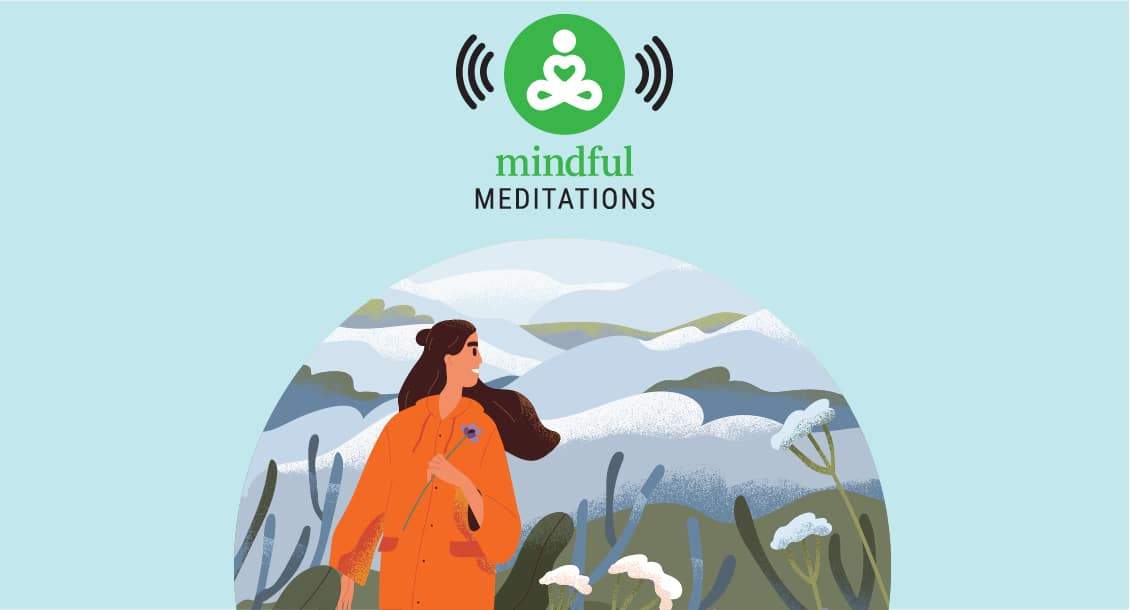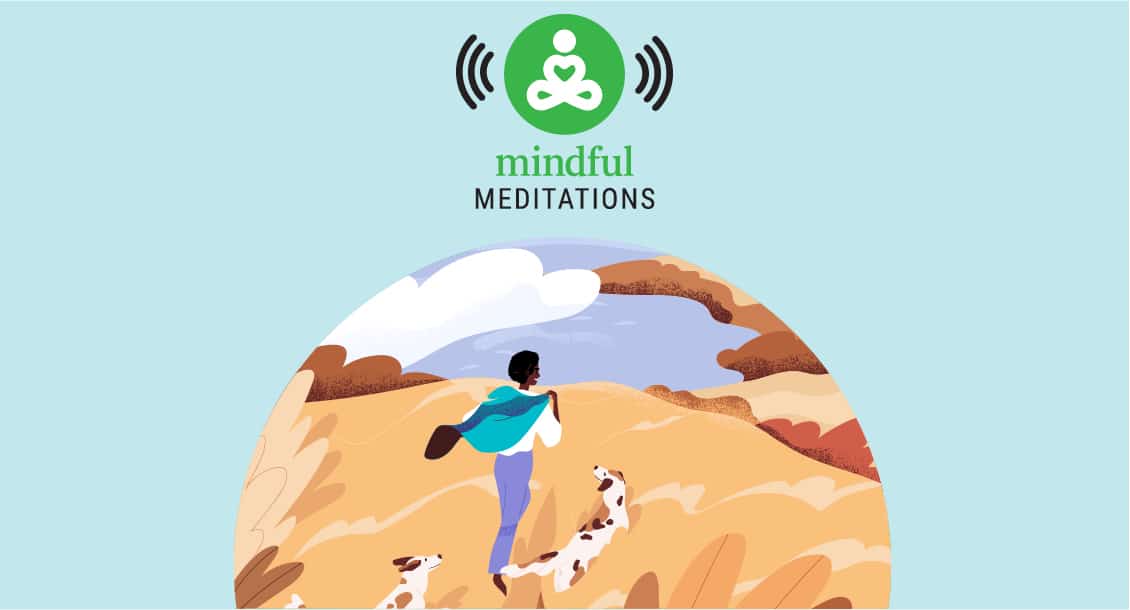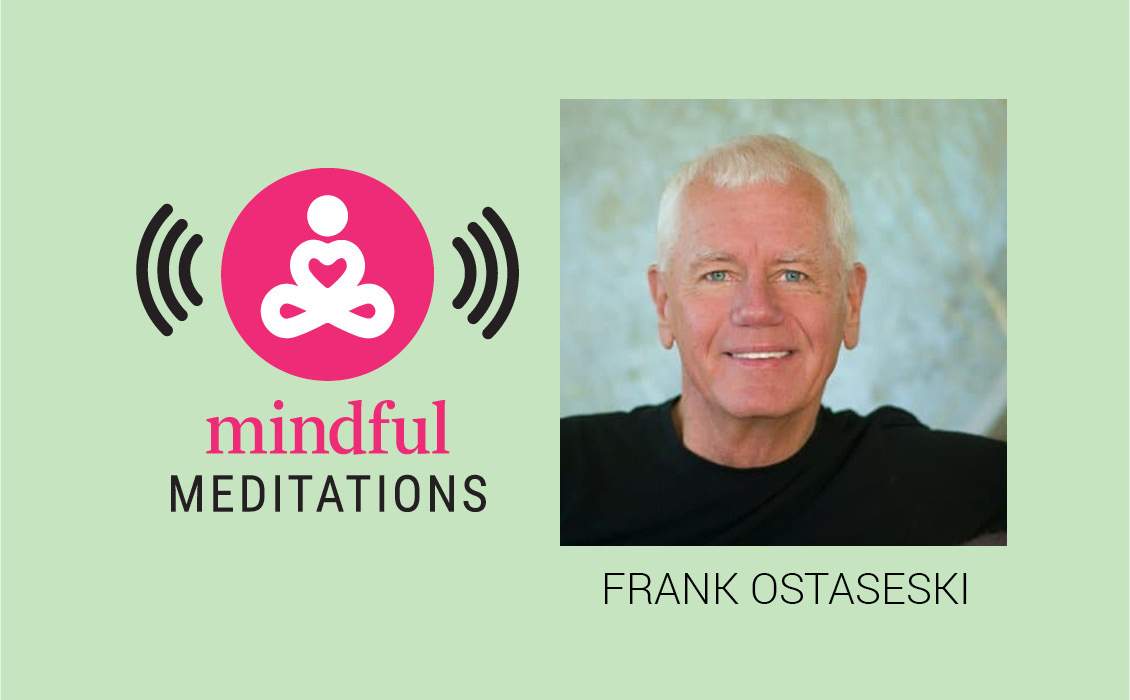In this series we’re going to be exploring how to bring mindfulness to our sensory experience. I’m going to be teaching this outside, so if you have the capability of watching this on your phone, try doing this at a local park or in some natural setting. If that’s not possible or doable, though, these practices can be done just as well at home. I’m going to be guiding you through how to bring awareness to your sensory experience, whether that’s seeing, hearing, sensing the body, or the full panorama of sensory experience that we experience both in life and in meditation.
The Doorway to the Present Moment
In this first practice we’re going to be exploring mindful listening. Listening is a beautiful doorway to the present moment, a tuning in to what’s here. I think of mindfulness, essentially, as a deep-listening practice.
With listening, the qualities we’re developing are receptivity, relaxation, and a sense of naturalness. We don’t need to make that much effort to hear anything. A sound arises and is known quite easily and naturally in awareness.
So, with this particular meditation, the idea is to cultivate a sense of ease, relaxation, receptivity, openness, and we allow the sounds to be the locus for our attention, where we’re simply present to the flow and the changes in the soundscape.
Mindful Listening: Attuning to What’s Present
Watch the video:
Listen to the Audio:
Attuning to What’s Present
Follow the Practice:
- Find a posture where you can sit comfortably, relaxed, at ease. I suggest you sit with your eyes closed, or if that’s not comfortable, lower your gaze.
- Begin by just sensing your body sitting. Then turn your attention to sounds, to hearing, to. listening. Be aware of the whole panorama of sounds: distant sounds, near sounds; the sounds of my voice. And depending on where you’re doing this meditation, you may hear an array of nature sounds: Birdsong, the sound of wind. And, most likely: Human sounds, mechanical sounds, traffic. From the perspective of awareness, simply tune into sounds coming and going in the field of your attention.
- Stay present in awareness where each sound is coming and going. There’s no need to label the sound or visualize the source of the sound. Simply be present to the ebb and flow of sounds. Be aware of the silence out of which the sounds emerge and pass back into.
- Of course, you’ll notice many other things in the field of your experience: sensations in the body or breath; thoughts; images; feelings. Acknowledge those things when they call the attention. And then keep attuning your awareness to hearing; listening to the soundscape; the ebb and flow of sounds. Allow your attention to be wide, open, spacious, receptive. Sounds are coming and going in the field of awareness.
- Notice any tendency to a preference of some sounds over others—the liking of certain sounds, the disliking of certain sounds. And in this practice of mindfulness, we’re simply present to the whole range of experience. Notice any response or reactivity. Let’s see if we can rest in the still point in the center, present to this whole range of experience of sounds, welcoming and inviting them all in.
- Notice when attention wanders and acknowledge that without judgment, bringing attention back here to the experience of sitting; listening; being mindful of the impact of this experience of simply listening with open awareness.
- Notice how it might impact your body or your heart, your mind. Notice how effortless this experience of mindful listening can be. There’s no need to struggle or strive. We’re simply hearing and are aware of hearing.
- And so, as we bring this practice to a close, notice the influence of this simple meditation, mindful listening. Notice its impact. Notice what influence it’s had on your mind and heart and body.
You may choose to practice this in different locations throughout the week. Notice what it’s like to practice mindful listening indoors or outside in a park or in a busy area where you live, where there are a lot of sounds. Notice that versus practicing in nature.
I invite you to be aware of how you can bring awareness to sounds as a support for mindfulness, as a support for present-moment awareness. See how sounds are inviting us over and over, here, in this moment. Let’s be curious as we move through this week, to explore sounds, and how we can bring awareness to them wherever we are.
explore session #2
Cultivating a Sense of Presence and Awareness
Meditation is often done eyes closed. Soft-gaze meditation can broaden our visual field and encourage an open, receptive quality of attention.
Read More
more mindful meditations
Fearless Open-Hearted Awareness with Frank Ostaseski
In this four-part series, you’ll explore your relationship to endings without any judgment or criticality.
Read More
Nourish Compassion with Vinny Ferraro
In this four-part series, you’ll discover the power of compassion and explore how it can help you connect more deeply with both yourself and others.
Read More






